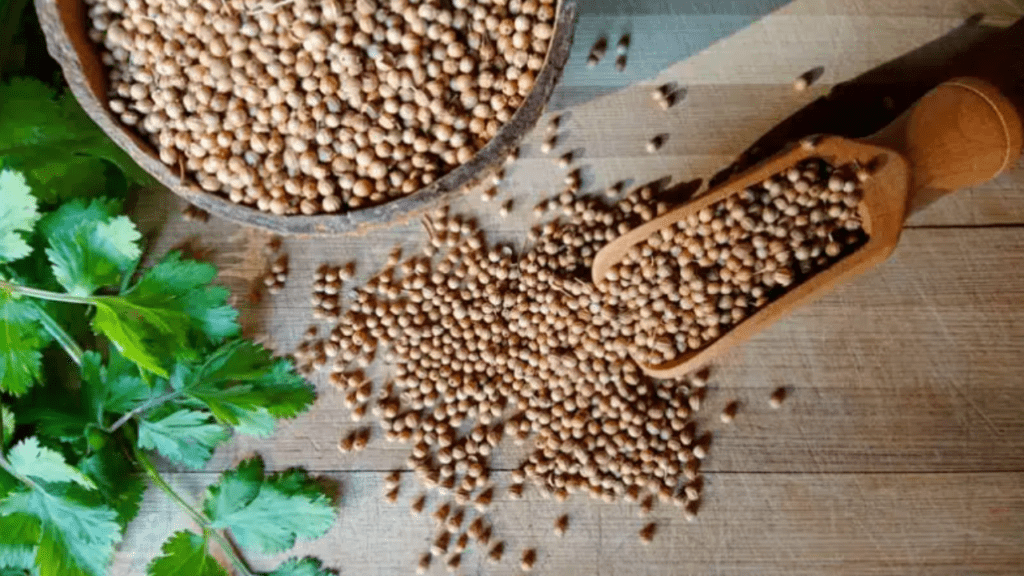
Celery Seeds for Planting: Top Tips for Successful Growth
Growing your own celery can be incredibly rewarding, providing you with fresh, crunchy stalks perfect for a variety of dishes. Starting with celery seeds for planting is an excellent way to ensure you cultivate the healthiest and most robust plants. In this comprehensive guide, we’ll explore everything you need to know about selecting, planting, and caring for celery seeds to achieve a bountiful harvest.
If you are considering planting celery seeds, it is important to choose a good quality seed and provide the right conditions for it to thrive. Start by preparing a rich, well-draining soil for your celery seeds. It’s important to keep the soil consistently moist, as celery plants require plenty of water to grow. Additionally, celery plants thrive in cool, moist conditions, so it’s important to provide adequate shade and protection from the heat of the sun. Once your celery plants have grown to a suitable size, they can be harvested by cutting the stalks at the base. Celery can be used in a variety of culinary dishes, from soups and stews to salads and stir-fries, making it a versatile and valuable addition to any kitchen. In summary, growing celery from seeds can be a rewarding experience that provides both culinary and nutritional value. By following these top tips for successful growth, you can enjoy a bountiful harvest of this versatile and healthy vegetable. Remember to stay motivated and focused on your goal of growing healthy and delicious celery from seeds!
Table of Contents
ToggleUnderstanding Celery Seeds for Planting
Celery seeds can be planted in a well-drained area with plenty of sunlight. It’s important to keep the soil consistently moist, as celery plants require plenty of water to grow. Additionally, celery plants thrive in cool, moist conditions, so it’s important to provide adequate shade and protection from the heat of the sun. Once your celery plants have grown to a suitable size, they can be harvested by cutting the stalks at the base.
Celery can be used in a variety of culinary dishes, from soups and stews to salads and stir-fries, making it a versatile and valuable addition to any kitchen. In summary, growing celery from seeds can be a rewarding experience that provides both culinary and nutritional value. By following these top tips for successful growth, you can enjoy a bountiful harvest of this versatile and healthy vegetable. Remember to stay motivated and focused on your goal of growing healthy and delicious celery from seeds!
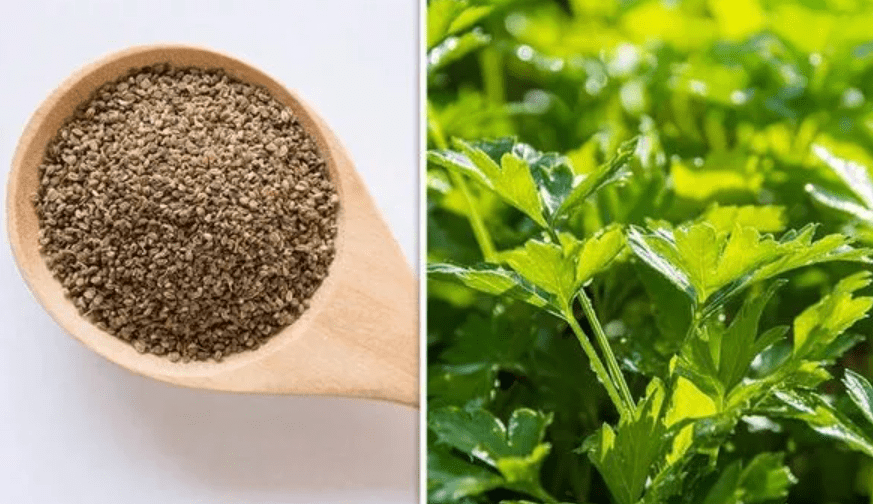
What are Celery Seeds?
Celery seeds are the seeds of the celery plant, which is a popular vegetable known for its crispy texture and distinct flavor. When planting celery seeds, it’s important to start them indoors in a warm, well-lit area before transplanting them outdoors in a sunny spot with nutrient-rich soil. Celery seeds require a long growing season, so it’s best to start them indoors early in the spring. Once the plants have matured and developed stalks, they can be harvested and used in a variety of culinary dishes, adding both flavor and nutritional value. Overall, celery seeds are an essential component for growing this versatile and healthy vegetable.
Benefits of Growing Celery from Seeds
Growing celery from seeds offers a range of benefits. For starters, it allows you to have full control over the growing process, from seed to harvest. This means you can ensure that your celery is grown in a way that meets your standards for organic, pesticide-free, or sustainable practices. Additionally, growing celery from seeds allows you to choose from a wider variety of celery types, including different colors and flavors. You can also save money by growing your own celery from seeds, as purchasing seeds is generally more cost-effective than buying fully-grown celery plants. Overall, growing celery from seeds gives you the satisfaction of nurturing a plant from its earliest stages and reaping the rewards of a bountiful and healthy harvest.
Selecting Celery Seeds for Planting
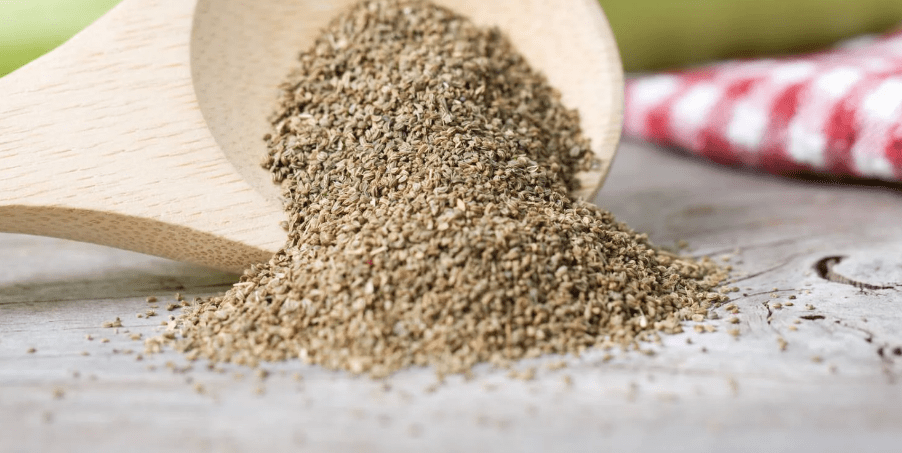
Types of Celery Seeds
When it comes to selecting celery seeds for planting, there are a few different types to consider. There are traditional green celery seeds, which are the most common and popular choice for growing celery. These seeds produce the classic, crisp, and flavorful celery stalks that we all know and love.
There are also red celery seeds, which produce celery with a vibrant red color. This type of celery adds a pop of color to dishes and has a slightly more intense flavor compared to green celery.
Finally, there are also leaf celery seeds, which are often used for their aromatic leaves rather than their stalks. Leaf celery has a milder flavor and is often used as an herb or seasoning in cooking.
No matter which type of celery seeds you choose, be sure to select high-quality seeds from a reputable supplier. This will ensure that you have the best chance of growing healthy and flavorful celery plants.
Where to Buy Celery Seeds
You can buy celery seeds from a variety of sources. Many garden centers and nurseries carry a selection of celery seeds, so you can check your local stores first. You can also purchase celery seeds online from reputable seed companies or through online marketplaces. Just be sure to read reviews and check the reputation of the seller before making a purchase. Additionally, some grocery stores or health food stores may also carry celery seeds for growing purposes. No matter where you choose to buy your celery seeds, be sure to select high-quality seeds to ensure the best chance of successful growth.
Preparing Celery Seeds for Planting
Seed Treatment and Preparation
is an important step in ensuring successful growth of celery plants. Before planting, it is recommended to soak the celery seeds in warm water for 24 hours. This will help to soften the seed coat and encourage germination. After soaking, drain the seeds and spread them out on a paper towel to dry before planting.
In addition to soaking, some gardeners also recommend scarifying the celery seeds by gently rubbing them with sandpaper. This can help to further soften the seed coat and improve germination rates.
Once the seeds have been treated and prepared, they can be planted in well-draining soil and kept moist until germination occurs. It is important to provide the seeds with the right conditions for successful growth, including adequate sunlight and regular watering.
By taking the time to properly prepare celery seeds for planting, you can increase the likelihood of growing strong, healthy plants that will provide you with delicious, homegrown celery for use in your cooking.
Soil Preparation
is an important step in growing healthy and thriving plants. Before planting celery seeds, it is recommended to soak them in warm water for 24 hours. This can help to soften the seed coat and encourage germination. After soaking, it is important to drain the seeds and allow them to dry on a paper towel before planting. Some gardeners also recommend scarifying the seeds by gently rubbing them with sandpaper to further improve germination rates.
Once the seeds have been treated and prepared, they can be planted in well-draining soil and kept moist until germination occurs. It is important to provide the seeds with the right conditions for successful growth, including adequate sunlight and regular watering. By taking the time to properly prepare celery seeds for planting, you can increase the likelihood of growing strong, healthy plants that will provide you with delicious, homegrown celery for use in your cooking. Proper soil preparation can make a significant difference in the success of your garden and the quality of the produce you grow.
Planting Celery Seeds
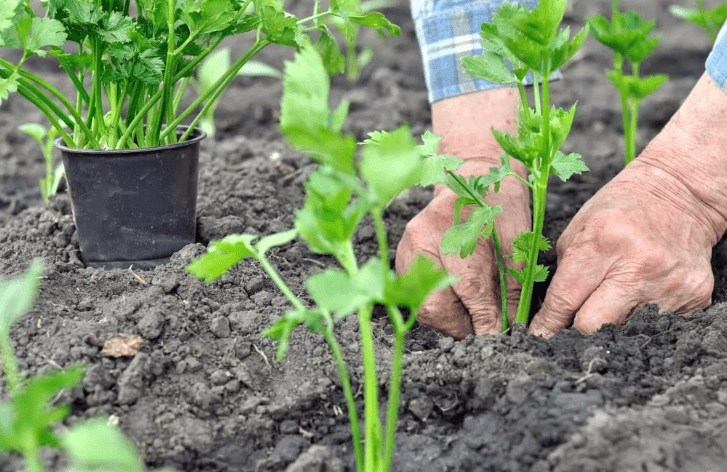
Timing and Climate
Before planting celery seeds, it is important to take into consideration the timing and climate of your area. Celery is a cool-season vegetable, so it is best to sow the seeds in early spring so that they have time to grow before the heat of summer. It is recommended to soak the seeds in warm water for 24 hours before planting. This can help to soften the seed coat and encourage germination. After soaking, it is important to drain the seeds and allow them to dry on a paper towel before planting.
Some gardeners also recommend scarifying the seeds by gently rubbing them with sandpaper to further improve germination rates. Once the seeds have been treated and prepared, they can be planted in well-draining soil and kept moist until germination occurs. It is important to provide the seeds with the right conditions for successful growth, including adequate sunlight and regular watering. By taking the time to properly prepare celery seeds for planting, you can increase the likelihood of growing strong, healthy plants that will provide you with delicious, homegrown celery for use in your cooking. Proper soil preparation can make a significant difference in the success of your garden and the quality of the produce you grow.
Planting Techniques
can make a significant difference in the success of your garden and the quality of the produce you grow. It is recommended to soak the seeds in warm water for 24 hours before planting. This can help to soften the seed coat and encourage germination. After soaking, it is important to drain the seeds and allow them to dry on a paper towel before planting. Some gardeners also recommend scarifying the seeds by gently rubbing them with sandpaper to further improve germination rates. Once the seeds have been treated and prepared, they can be planted in well-draining soil and kept moist until germination occurs. It is important to provide the seeds with the right conditions for successful growth, including adequate sunlight and regular watering. By taking the time to properly prepare seeds for planting, you can increase the likelihood of growing strong, healthy plants that will provide you with delicious, homegrown produce for use in your cooking. Always make sure to research the specific planting needs of the seeds you are working with, as different plants may require different methods of preparation and care.
Germination and Early Growth
are crucial stages in the life of a plant. To ensure successful germination, it is recommended to soak the seeds in warm water for 24 hours before planting. This helps to soften the seed coat and encourage germination. After soaking, it is important to drain the seeds and allow them to dry on a paper towel before planting. Some gardeners also recommend scarifying the seeds by gently rubbing them with sandpaper to further improve germination rates.
Once the seeds have been treated and prepared, they can be planted in well-draining soil and kept moist until germination occurs. It is important to provide the seeds with the right conditions for successful growth, including adequate sunlight and regular watering.
By taking the time to properly prepare seeds for planting, you can increase the likelihood of growing strong, healthy plants that will provide you with delicious, homegrown produce for use in your cooking. Always make sure to research the specific planting needs of the seeds you are working with, as different plants may require different methods of preparation and care.
Caring for Celery Plants
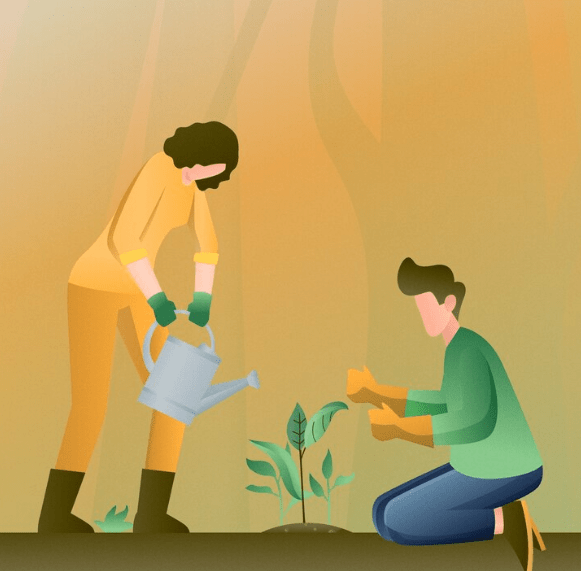
Watering
Celery plants require consistent and even watering to thrive. It is important to keep the soil consistently moist, but not waterlogged. When watering, aim to keep the soil evenly moist, as irregular watering can lead to issues such as cracking or toughening of the celery stalks. Water the plants at their base to avoid getting the leaves wet, as this can encourage disease. Additionally, it is important to water celery plants in the morning to allow any excess moisture to evaporate during the day, reducing the risk of fungal diseases. During periods of hot, dry weather, you may need to water celery plants more frequently to ensure they remain adequately hydrated. Overall, providing consistent and appropriate watering is essential for the health and successful growth of celery plants.
Fertilization
is an important part of caring for celery plants. Celery plants are heavy feeders and require a nutrient-rich soil to thrive. Before planting celery, it is beneficial to incorporate a balanced fertilizer into the soil. Once the plants have been established, it is important to continue fertilizing them throughout the growing season. A high-nitrogen fertilizer can help promote healthy leafy growth, while a balanced fertilizer will provide the necessary nutrients for overall plant health. It is important to follow the manufacturer’s recommendations for application rates and frequency when fertilizing celery plants. Additionally, organic matter such as compost can be incorporated into the soil to provide a slow-release source of nutrients for the plants. Regular fertilization will help ensure that your celery plants have the nutrients they need to grow strong and healthy, ultimately leading to a bountiful harvest of delicious celery stalks.
Disease Prevention
is an important aspect of caring for celery plants. One of the most common diseases that affect celery plants is leaf blight, which is caused by a fungus. To prevent this disease, it is important to avoid overhead watering and to water the plants at the base to keep the foliage dry. Additionally, it is beneficial to space the plants properly to allow for good air circulation, as this can help prevent the spread of disease. It is also important to monitor the plants regularly for any signs of disease and to remove and destroy any infected plant material to prevent the spread of the disease. Using disease-resistant celery varieties can also help prevent disease. By implementing these disease prevention strategies, you can help ensure the health and successful growth of your celery plants.
Transplanting and Thinning Celery Plants
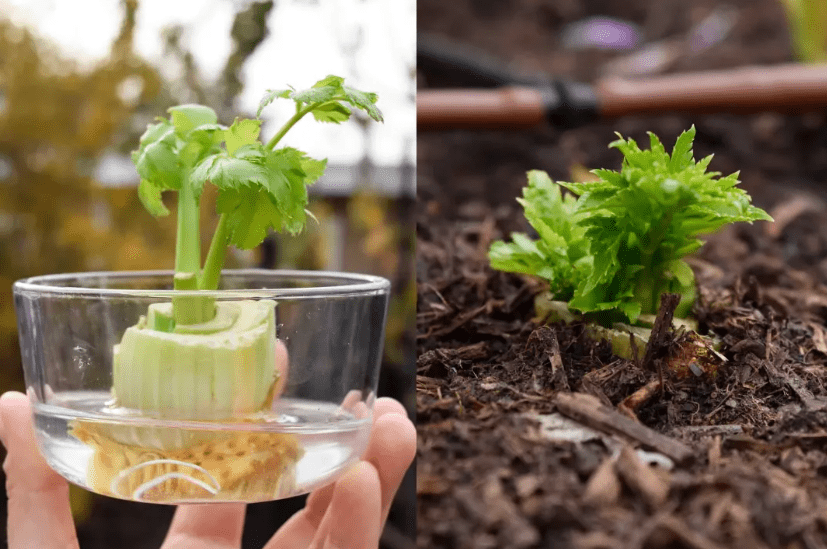
is an important step in caring for your celery plants. When the plants have grown to a height of about 4-6 inches, they can be transplanted into the garden or to larger containers. Carefully lift the plants from their original containers and gently transfer them to the new location, spacing them about 10-12 inches apart. This will give them enough room to grow and develop healthy stalks. Thinning is also important to ensure that the remaining plants have enough space and resources to thrive. When the plants are about 6-8 inches tall, you can carefully remove the smaller, weaker plants to give the stronger ones more room to grow. This will help prevent overcrowding and competition for nutrients, ultimately leading to healthier and more productive celery plants.
Uses and Benefits of Homegrown Celery
Homegrown celery has many uses and benefits. It can be used in a variety of dishes such as soups, stews, salads, and stir-fries. It adds a refreshing crunch and a unique flavor to any recipe. Celery is also low in calories and high in fiber, making it a healthy addition to your diet. It contains vitamins and minerals such as vitamin K, vitamin C, potassium, and folate. Additionally, growing your own celery allows you to have access to fresh, organic produce right in your own backyard. This can save you money and reduce your environmental impact by cutting down on transportation emissions. Overall, homegrown celery is a versatile and nutritious vegetable that can enhance your culinary creations and contribute to a healthier lifestyle.
In conclusion, growing celery from seeds requires attention to detail and careful nurturing. It’s important to provide the right growing conditions, such as well-drained soil and plenty of sunlight. Additionally, regular watering and fertilizing will help the celery plants thrive. By following these tips and being patient, you can successfully grow celery from seeds and enjoy a bountiful harvest. Happy gardening!
Frequently asked questions And Answer
The best time to plant celery seeds is in early spring, after the danger of frost has passed.
Plant celery seeds about 1/8 inch deep in well-draining soil.
Keep the soil consistently moist but not waterlogged. Water your celery seeds regularly, especially during dry periods.
Celery seeds need full sun for at least 6-8 hours a day to thrive.
Celery seeds typically take 14-21 days to germinate.
Keep an eye out for common celery pests such as aphids and caterpillars, and regularly inspect your plants for signs of disease.
Celery is typically ready to harvest 3-4 months after planting, once the stalks are large and crisp.
Yes, you can save celery seeds for planting next year by allowing the plants to bolt and produce seeds, then collecting and storing the seeds in a cool, dry place.
